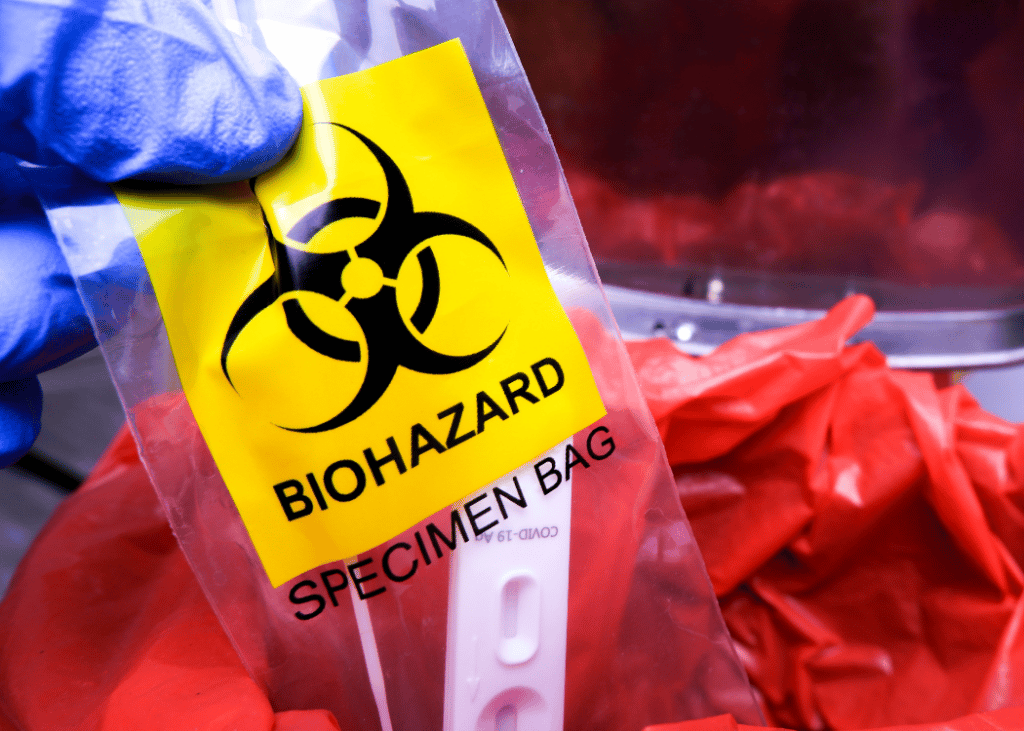Recognizing the Various Kinds Of Waste Disposal Strategies
In the world of waste administration, the variety of disposal strategies available today is huge and differed, each approach offering a distinctive objective in dealing with the obstacle of garbage disposal. click here. From recycling techniques that aim to give brand-new life to products, to the elaborate procedures of dangerous waste management, the landscape of garbage disposal is complicated yet important for ecological sustainability. Comprehending the subtleties of these various methods not just clarifies the significance of liable waste monitoring yet also prompts us to reassess our strategy in the direction of garbage disposal in a rapidly advancing globe

Recycling Methods
Reusing methods are crucial for lasting waste management techniques in both domestic and commercial setups. medical waste removal. By executing reliable recycling strategies, a significant amount of waste can be drawn away from landfills, preserving natural deposits and minimizing the ecological impact of production processes
In houses, curbside recycling programs play a vital role in motivating households to separate recyclable materials from basic waste. Products such as paper, plastics, glass, and steels can be sorted and collected for handling into brand-new items, decreasing the need for raw products and energy-intensive manufacturing processes.
Industrial facilities also depend on recycling approaches to minimize waste generation and advertise a circular economic situation. By applying closed-loop systems, services can reuse materials within their production procedures, decreasing expenses and environmental footprint. medical waste removal near me. Furthermore, commercial recycling programs frequently include collaborations with specialized recycling centers to ensure that products are properly sorted, refined, and reintegrated into the supply chain
Composting Techniques

Oxygenated fixed stack composting includes blending organic waste materials in a large stack and routinely turning it to make certain correct aeration. This method is appropriate for smaller-scale operations and houses.
In-vessel composting entails placing natural waste in a closed container with regulated conditions for temperature level and oygenation. This technique works for taking care of food waste in city areas. Finally, windrow composting includes developing long rows of natural waste and consistently transforming them to advertise decomposition. This method is commonly made use of in agricultural settings.
Land Fill Disposal
Land fill disposal is a frequently utilized method for managing waste that can not be recycled or composted. Methane gas, a result of decaying natural waste in landfills, is typically gathered and used as a resource of sustainable power. Initiatives to lower reliance on landfills include promoting waste reduction, recycling, and discovering alternate waste disposal methods to minimize the environmental impact linked with standard landfill disposal techniques.

Waste-to-Energy Incineration
Incineration of waste for energy generation is a method significantly being considered as a choice to typical garbage dump disposal strategies. Waste-to-energy incineration includes the burning of waste products at heats, usually in specialized facilities created to create electrical power or warm via the process - click here. This method not just decreases the volume of waste that would certainly otherwise be destined for garbage dumps but also uses the warm produced during incineration to create energy
One of the key advantages of waste-to-energy incineration is its capacity to create power while minimizing the ecological effect contrasted to conventional landfill disposal approaches. By converting waste right into energy, this method helps in minimizing greenhouse gas exhausts and dependence on nonrenewable fuel sources for energy generation. Furthermore, waste-to-energy centers are geared up with sophisticated air contamination control modern technologies to reduce possible toxic wastes released throughout the combustion procedure.
Hazardous Waste Administration

Thinking about the critical significance of accountable waste administration techniques, particularly in the realm of ecological sustainability, the focus now changes in the direction of the detailed domain name of Hazardous Waste Administration. Contaminated materials presents considerable threats to both human health and wellness and the setting, necessitating specific handling and disposal strategies. Typical instances of contaminated materials consist of chemicals, batteries, chemicals, and electronic waste.
Contaminated materials Management includes the recognition, collection, transport, therapy, and disposal of products considered hazardous or potentially harmful. This process needs adherence to strict laws and standards to mitigate negative influences on communities and public wellness. Numerous techniques are utilized in taking care of contaminated materials, including recycling, secure garbage dumps, encapsulation, and chemical treatment.
Appropriate Contaminated Materials Management is important for protecting against contamination of dirt, water sources, and air contamination. It is essential for sectors, labs, health care centers, and various other generators of contaminated materials to carry out durable administration methods, training programs, and emergency response plans to make certain the secure handling and disposal of these products. Failing to take care of contaminated Home Page materials suitably can have significant repercussions, emphasizing the importance of liable and thorough techniques in this area.
Conclusion
Finally, garbage disposal techniques play a critical duty in managing and minimizing the influence of waste on the atmosphere. From recycling and composting to land fill disposal and waste-to-energy incineration, each approach has its very own benefits and limitations. Appropriate monitoring of contaminated materials is also important to safeguard public wellness and the setting. It is crucial for sectors and individuals to comprehend the different waste disposal strategies offered and pick the most appropriate method for sustainable waste management.
In the world of waste administration, the selection of disposal methods offered today is large and differed, each approach serving a distinct objective in dealing with the obstacle of waste disposal. click here. From recycling techniques that intend to give new life to products, to the elaborate processes of hazardous waste monitoring, the landscape of waste disposal is intricate yet essential for ecological sustainability. Understanding the subtleties of these different methods not just loses light on the importance of liable waste monitoring yet likewise prompts us to rethink our method towards waste disposal in a rapidly advancing globe
Initiatives to decrease reliance on landfills consist of promoting waste decrease, recycling, and discovering alternate waste disposal techniques to decrease the ecological footprint connected with typical landfill disposal techniques.
It is important for individuals and sectors to recognize the different waste disposal methods offered and pick the most ideal approach for sustainable waste management.